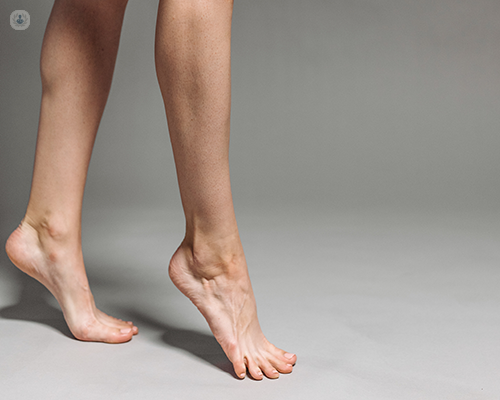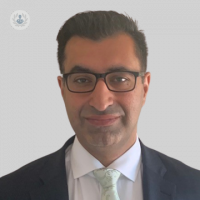The difference between minimally invasive and open bunion surgery
Written in association with:Bunion surgery is an operation to correct a bunion (hallux valgus), a deformity on the joint at the base of the big toe. There are many ways to perform bunion surgery, including using open or minimally invasive surgical techniques.
Here, Mr Bal Dhinsa, renowned consultant orthopaedic surgeon, provides an expert insight into minimally invasive bunion surgery.

What are the benefits of minimally invasive versus open bunion surgery?
Smaller incisions with minimally invasive bunion surgery mean less damage to the soft tissues (such as, the skin and the muscles) and hopefully, less swelling and pain. This also allows for the correction of larger bunions.
What is minimally invasive bunion surgery?
Open bunion surgery is performed through an approximate 8mm incision (which typically heals well and is barely visible with time), using a saw to cut the bones and realign them.
With minimally invasive bunion surgery, the bones are cut with a burr under x-ray guidance, which means that smaller incisions are required.
How long does it take to recover from minimally invasive bunion surgery?
The actual time between surgery to wearing normal shoes and weightbearing is the same for both techniques.
However, patients who have undergone minimally invasive bunion surgery theoretically have a better range of motion due to less soft tissue damage.
What is the success rate of minimally invasive bunion surgery?
I can’t put a figure on success rates as this is subjective to each patient. However, overall, surgery can achieve excellent correction of angles and deformity, and patient satisfaction is good. Complication rates remain low based on published evidence.
The wounds of open and minimally invasive surgery bunion correction are very similar - looking at six months - as my open surgery utilises only a small incision.
How much does minimally invasive bunion surgery cost?
The cost will depend on the hospital where the surgery will take place, as well as if any additional surgical procedures are needed at the same time. Once there is a plan made for surgery, a quote will be provided.
Mr Bal Dhinsa is a highly skilled consultant orthopaedic surgeon with over 15 years’ experience.
If you are considering minimally invasive bunion surgery and you would like to consult your options with an expert, do not hesitate to book an appointment with Mr Dhinsa via his Top Doctors profile today.


